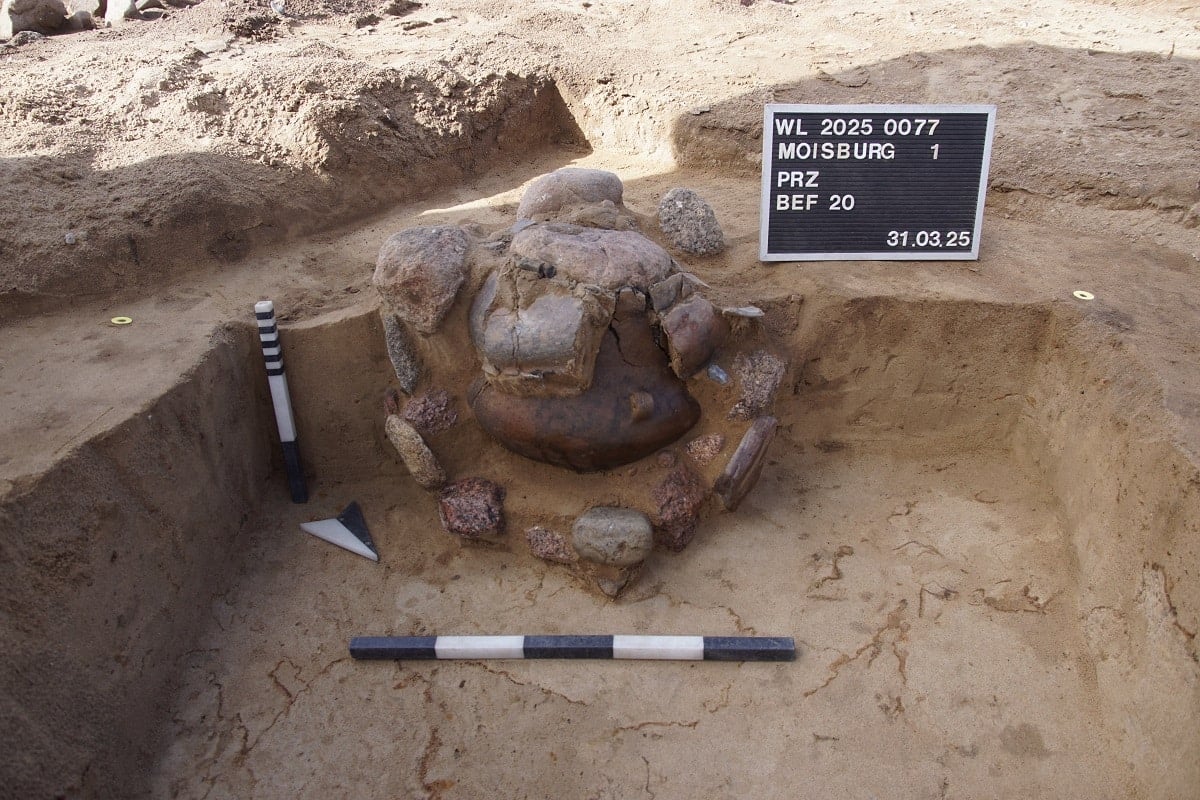

A routine roadwork project has led to a significant archaeological discovery along County Road 17 between Moisburg and Immenbeck in Lower Saxony, Germany. While digging for a new drainage system, construction crews uncovered several ancient Bronze Age cremation urns, prompting a full excavation led by the Hamburg Archaeological Museum.
District archaeologist Dr. Jochen Brandt and his team identified the urns dating back to the Late Bronze Age, approximately 1200 to 600 B.C. Nearly 30 graves were excavated, many of which featured urns placed inside box-like structures made of fieldstones and originally sealed with a single large stone—a burial custom typical of the time.
“For the first time in many years, we have succeeded in recovering complete cremations from an intensively cultivated area,” stated Dr. Brandt. “Usually, urns have almost completely fallen victim to intensive modern agriculture.”
The graves were found in an area previously known for such finds. Similar urns had been discovered in the 1930s along the same road, but the condition of the new finds surprised archaeologists.
Urns have long been used across cultures to store the cremated remains of the dead. Made from ceramic, stone, glass, or metal, they often reflect the artistic and social values of the people who created them. Some urns contain inscriptions or grave goods intended to honor or accompany the deceased in death.
Though most of the newly discovered urns held only ashes, researchers hope to extract more information from the remains. “Unfortunately, and this is also characteristic of the period, very little besides the cremated bones of the deceased is found within the urns,” Brandt said.
However, scientific analysis of the ashes may help determine the age and gender of those buried nearly 3,000 years ago. The museum is seeking funding to carry out the examination.
The excavation was completed by the Hamburg Archaeological Museum, which serves as the scientific authority for preserving archaeological sites in the Harburg district. Volunteers assisted throughout the dig.
The find occurred during a drainage upgrade project that began in late March. The ongoing construction involves digging a deeper roadside ditch to manage rainwater, which will be channeled into the ground through an infiltration basin.
A settling basin placed upstream will capture potential pollutants. As part of the environmental restoration, 35 small-leaved linden trees will be planted to replace those removed during the project.
While the roadwork is expected to continue for several more months, the archaeological phase of the project has concluded, leaving behind valuable insight into the region’s ancient past.
